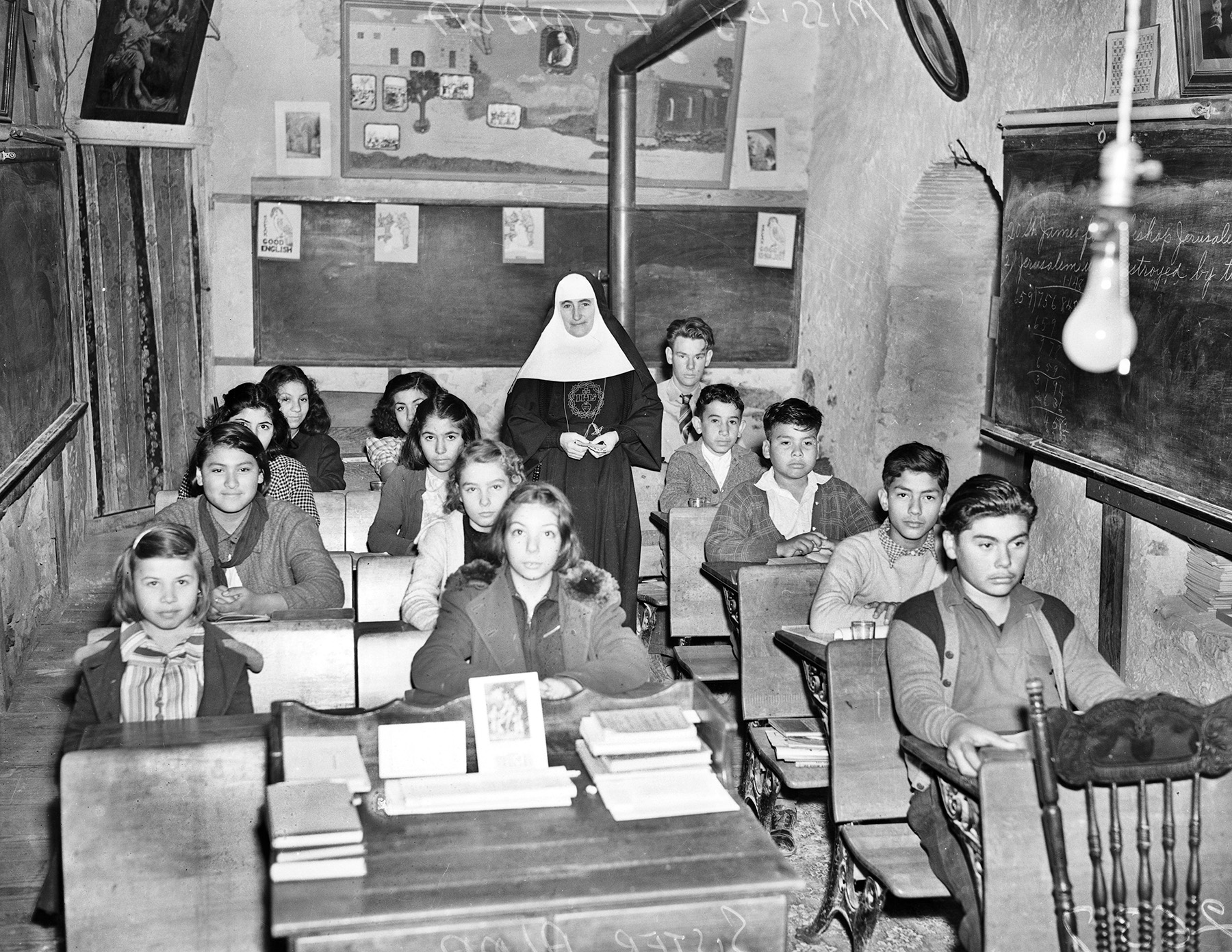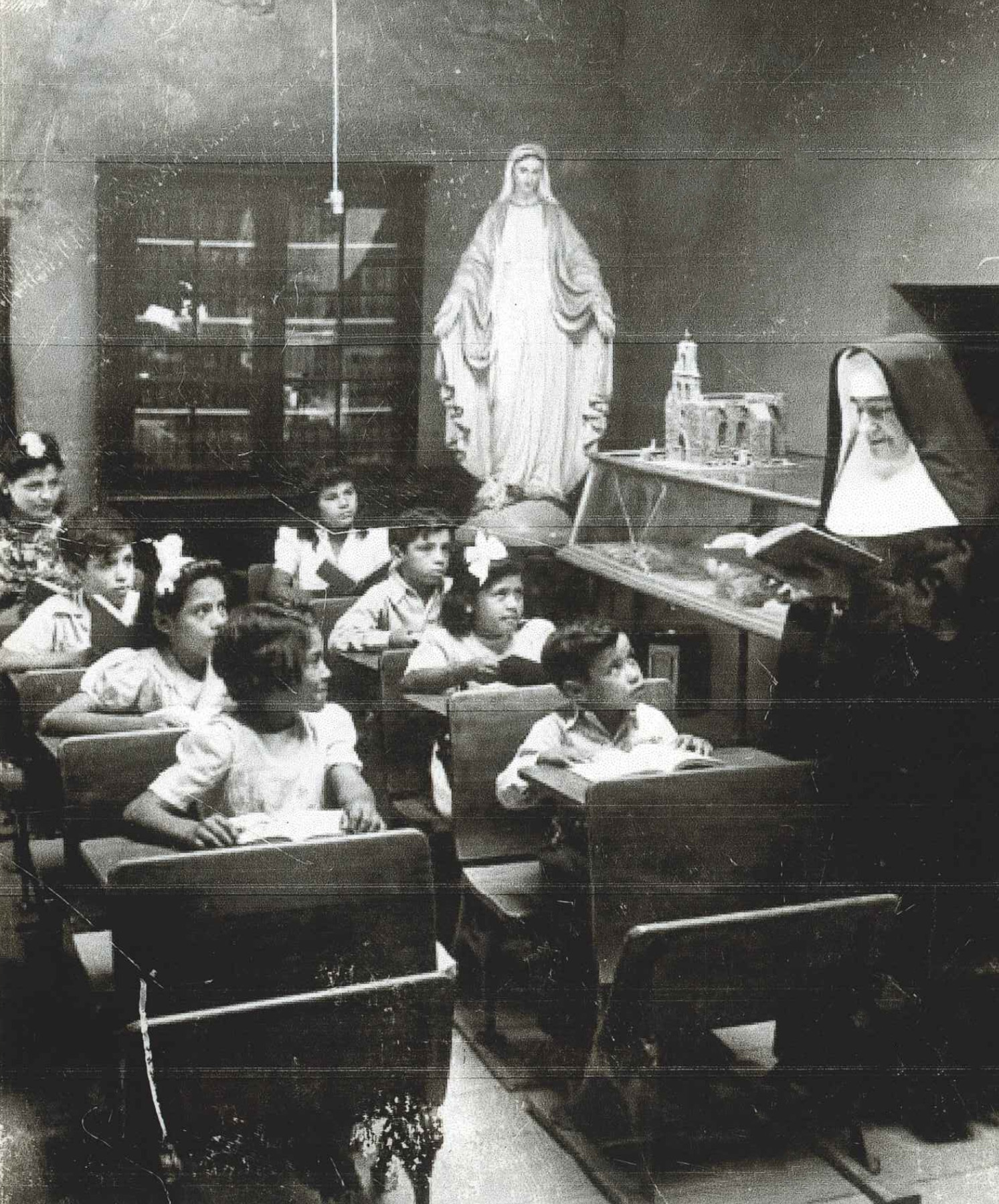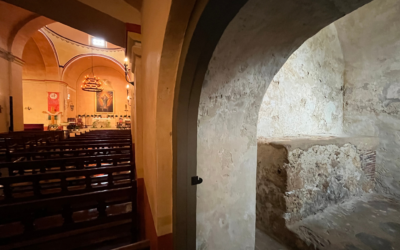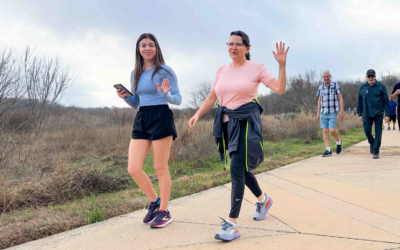The San Antonio Missions: San Antonio’s First Catholic Schools
The Mission Era
As we celebrate Catholic Schools Week in the Archdiocese of San Antonio, it is important to remember the role the San Antonio Missions played in shaping the city’s spiritual and educational landscape. The Missions were first and foremost communities of learning and can be considered the first “Catholic Schools” in the region. Their roles as centers of faith, learning and development have continued through the centuries.
Franciscan friars arrived in San Antonio in the late 18th century with the goal of spreading the Gospel of Jesus and converting all to Christianity as well as creating communities of good Spanish citizens. At the Missions, the Franciscans centered their curriculum on Catholic teachings, including prayer, sacraments, and biblical stories. Alongside this spiritual focus, the missions provided vocational training, offering practical instruction in agriculture, carpentry, masonry, ranching, and other essential skills. Basic literacy was also addressed, with missions offering education to both boys and girls in reading and writing. Developing a self-sufficient faithful community was the chief goal.

Mission Espada school in 1941. Photo from Institute of Texan Cultures, The University of Texas at San Antonio.
By 1825 the Franciscan friars had turned over the spiritual care of the Missions to the parish church of San Fernando and moved to California. The land, tools and animals of the missions were distributed to the remaining mission families. Andrew M. Edel, a French Marianist, purchased property surrounding Mission Concepcion in 1855 as a farming project to support St. Mary’s Institute, a boys’ school he had founded. In 1920 St. John’s Seminary was founded behind Mission Concepcion and continued as a seminary until 1967 when it merged with Assumption seminary on Woodlawn Avenue.
South of Mission Concepcion, the mission structures and educational support had declined particularly at the southernmost missions. Father Francis Bouchu, originally from France, answered the call to come to San Antonio, and played a pivotal role in Catholic education at Mission San Francisco de la Espada and San Juan Capistrano. The communities at these two churches were mostly Spanish speaking.
Finding that there was no adequate catechism in Spanish, Bouchu wrote one in 1872 and printed several thousand copies on a hand printing press that he also used for a local newspaper. In 1896 his catechism became the official catechism of the diocese of San Antonio. It was used throughout South Texas and New Mexico for many years. This translation significantly enhanced religious instruction, making Catholic teachings more accessible and fostering a deeper understanding of the faith among Spanish-speaking Catholics.
Following the death of Fr. Bouchu, the Sisters of Charity of the Incarnate Word decided to bring their educational experience to the Missions. The Sisters of Charity of the Incarnate Word arrived in San Antonio in 1869. Their charism inspired them to bring God’s love and compassion to all, especially the most vulnerable. To accomplish this goal, they opened an orphanage on the grounds of Mission Concepcion and the Espada School on the grounds of Mission San Francisco de La Espada.


Following the death of Fr. Bouchu, the Sisters of Charity of the Incarnate Word decided to bring their educational experience to the Missions. The Sisters of Charity of the Incarnate Word arrived in San Antonio in 1869. Their charism inspired them to bring God’s love and compassion to all, especially the most vulnerable. To accomplish this goal, they opened an orphanage on the grounds of Mission Concepcion and the Espada School on the grounds of Mission San Francisco de La Espada.
The Sisters, led by the inspiring Sister Pauline Fierro, opened the Espada School in 1915. Despite limited resources and basic facilities, they provided a nurturing environment where children could learn and grow. The curriculum included traditional subjects like reading, writing, arithmetic, and religious instruction. The Sisters organized religious celebrations, holiday traditions, and theatrical performances, fostering a strong sense of belonging. Their commitment extended beyond the classroom, as they provided healthcare and social services to families in need. Over the decades, the Espada School witnessed generations of students pass through its doors. The Sisters’ influence shaped countless lives, instilling a love of learning and a sense of social responsibility.
Serving as the first settlements, churches, and schools, the San Antonio Missions laid the groundwork for education and religious growth in the region. From their foundation by the Franciscan friars, to the later contributions of figures like Andrew Edel and Father Francis Bouchu, and the Sisters of Incarnate Word, the Missions have served as vital hubs of Catholic education through the years. Their story shows the enduring commitment to wholistic Catholic education; rooted in the Gospel and fostering intellectual, physical, and spiritual growth for all people.



